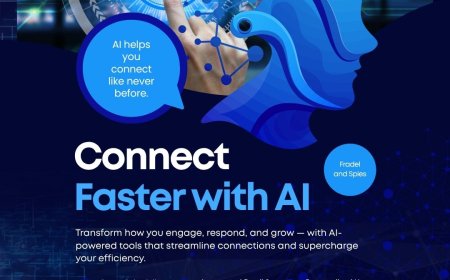Top 7 Reasons Your Mobile App Fails and How to Fix Them
Is your mobile app struggling? Discover 7 common reasons for app failure and actionable fixes to boost user retention and success for your Mobile App Development.
In the fiercely competitive digital landscape, launching a mobile app is just the first step. The journey from conception to sustained success is fraught with challenges, and unfortunately, many apps fail to gain traction or retain users. For any team engaged in Mobile App Development, understanding the common pitfalls is as crucial as mastering coding languages. Identifying these failure points early and implementing corrective measures can be the difference between an app that fades into obscurity and one that achieves widespread adoption and loyalty.
Failure in the app world isn't always about a catastrophic bug; often, it's a gradual decline caused by a combination of overlooked user needs, technical shortcomings, or flawed market strategies. By proactively addressing these issues, developers and businesses can significantly increase their app's chances of long-term viability and success.
Here are the top 7 reasons your mobile app might fail and actionable strategies to fix them:
1. Poor User Experience (UX) and Unintuitive Design
A clunky, confusing, or visually unappealing app will quickly drive users away, regardless of its underlying functionality.
- Why it Fails: Users have little patience for apps that are difficult to navigate, have slow loading times, inconsistent interfaces, or an overwhelming amount of information. If the app doesn't feel natural or intuitive, users will abandon it for a smoother alternative. A weak first-time user experience (FTUE) often leads to immediate uninstalls.
- How to Fix It:
- User Research First: Before and during Mobile App Development, conduct thorough user research (surveys, interviews, persona creation) to understand your target audience's needs, behaviors, and pain points.
- Simplify Navigation: Design clear, consistent, and intuitive navigation paths. Minimize the number of taps or steps required to complete core tasks.
- Focus on Visual Appeal: Invest in clean, modern, and aesthetically pleasing UI design that aligns with your brand and target audience.
- Optimize Performance: Ensure fast loading times, smooth animations, and responsiveness. Address any lags or crashes promptly.
- Iterative Design & Testing: Continuously test your UX with real users at various stages of development. Gather feedback and iterate on your designs to improve usability. Employ A/B testing for design elements.
- Streamline Onboarding: Make the onboarding process brief, benefit-oriented, and engaging, showing users immediate value.
2. Lack of a Clear Value Proposition and Market Need
Many apps are built on an idea rather than a validated solution to a real problem or an unmet market demand.
- Why it Fails: If your app doesn't solve a genuine problem, offer a unique benefit, or fill a gap in the market, users won't see a reason to download or keep it. It gets lost among countless similar apps. Apps that try to do too many things often end up doing nothing exceptionally well.
- How to Fix It:
- Validate Your Idea: Before significant Mobile App Development investment, conduct thorough market research to identify pain points, analyze competitors, and validate your app idea with potential users. Is there a clear "why" for your app?
- Define Your Niche: Clearly articulate your app's unique selling proposition (USP). What makes it different or better than existing solutions?
- Focus on Core Functionality (MVP): Start with a Minimum Viable Product (MVP) that delivers the absolute core value proposition exceptionally well. Avoid feature creep in early stages.
- A/B Test Value Messages: Test different messaging in your app store listings and marketing to see what resonates most with your target audience.
- Listen to Feedback: Continuously gather user feedback to ensure the app continues to meet evolving needs and provides tangible value.
3. Inadequate Marketing and Discovery
Even the best app won't succeed if people don't know it exists or can't find it.
- Why it Fails: With millions of apps available, relying solely on app store discovery is insufficient. Without a solid marketing strategy, your app will remain invisible to its target audience. This includes poor App Store Optimization (ASO), lack of digital marketing, and no pre-launch buzz.
- How to Fix It:
- Robust App Store Optimization (ASO): Optimize your app's title, subtitle, keywords, description, screenshots, and preview videos to rank higher in app store search results.
- Pre-Launch Marketing: Build anticipation before launch through social media campaigns, teaser websites, and press outreach.
- Multi-Channel Digital Marketing: Utilize a mix of channels including social media marketing, content marketing (blog posts, videos), influencer marketing, paid advertising (Google Ads, social media ads), and email marketing.
- Public Relations: Engage with tech journalists and bloggers to get reviews and coverage.
- Analytics and Iteration: Track your marketing efforts, analyze conversion rates, and continuously refine your strategy based on data.
- Community Building: Foster a community around your app on social media or forums to encourage organic growth and word-of-mouth.
4. Ignoring User Feedback and Analytics
Failing to listen to your users or track how they interact with your app is akin to flying blind.
- Why it Fails: Without understanding how users are truly engaging (or disengaging) with your app, you can't make informed decisions for improvements. Ignoring bug reports, feature requests, or negative reviews leads to user frustration and churn. Lack of data-driven insights means you're guessing what to build next.
- How to Fix It:
- Implement Robust Analytics: Integrate analytics tools (e.g., Google Analytics for Firebase, Mixpanel, Amplitude) to track user behavior, feature usage, retention rates, conversion funnels, and crash reports.
- Establish Feedback Channels: Provide easily accessible in-app feedback mechanisms (e.g., contact forms, rating prompts at opportune times) and monitor app store reviews and social media comments.
- Act on Feedback: Regularly review feedback and data. Prioritize fixes for critical bugs and implement highly requested features that align with your app's core value.
- A/B Testing: Continuously test new features, UI changes, and messaging to validate their impact on user engagement and retention.
- Close the Loop: When possible, communicate with users about changes made based on their feedback, demonstrating that their input is valued. This is a critical continuous process for successful Mobile App Development.
5. Monetization Strategy Fails to Deliver Value
A flawed or intrusive monetization strategy can alienate users, even if the app itself is good.
- Why it Fails: Aggressive advertising, paywalls for essential features, expensive in-app purchases that don't offer clear value, or a lack of transparent pricing can drive users away. Conversely, a monetization model that doesn't generate enough revenue means the app cannot sustain itself.
- How to Fix It:
- Value-Driven Monetization: Ensure your monetization strategy aligns with the value your app provides. Users are willing to pay if they perceive significant value.
- Diverse Models: Explore various monetization models:
- Freemium: Offer basic features for free and charge for premium functionalities.
- Subscription: For ongoing content or service.
- In-App Purchases: For virtual goods, consumables, or unlocking features.
- Advertising: If ads are used, ensure they are non-intrusive and contextually relevant.
- A/B Test Monetization: Test different pricing tiers, ad placements, or premium features to find the optimal balance between revenue and user experience.
- Transparency: Be clear about what users get for their money or for viewing ads.
- Respect User Experience: Never let monetization tactics compromise the core usability and flow of the app.
6. Technical Debt and Lack of Scalability Planning
Ignoring technical debt and failing to plan for future growth can cripple an app as its user base expands.
- Why it Fails: Rapid initial Mobile App Development often leads to shortcuts and "quick fixes" that accumulate as technical debt. Without refactoring and planning for scalability, the app becomes unstable, slow, difficult to maintain, and prone to crashes as user numbers grow. Performance issues on low-end devices or under network strain become severe.
- How to Fix It:
- Prioritize Technical Health: Dedicate regular time in development sprints for refactoring code, optimizing databases, and improving infrastructure.
- Design for Scalability: From day one, plan for horizontal scaling of your backend, use stateless services, and consider cloud-native architectures (microservices, serverless, containers).
- Performance Optimization: Continuously monitor and optimize for memory usage, CPU consumption, and network efficiency. Optimize images and assets.
- Automated Testing: Implement comprehensive automated unit, integration, and UI tests to catch bugs early and ensure stability during refactoring.
- Load Testing: Regularly conduct load testing to identify bottlenecks before they impact production.
- Continuous Integration/Continuous Delivery (CI/CD): Automate your build, test, and deployment processes to ensure consistent, reliable, and frequent updates.
7. Neglecting Post-Launch Updates and Maintenance
An app isn't "done" once it's launched. The mobile ecosystem constantly evolves, and users expect continuous improvement.
- Why it Fails: Failing to release regular updates to fix bugs, add new features, support new OS versions, or adapt to changing user expectations signals abandonment. Stagnant apps quickly lose relevance and users to more actively maintained competitors. Security vulnerabilities can also arise if the app isn't patched.
- How to Fix It:
- Planned Update Schedule: Establish a clear roadmap for post-launch updates, including bug fixes, performance enhancements, and new feature rollouts.
- OS Compatibility: Regularly test and update your app to ensure compatibility with the latest versions of iOS and Android. Leverage new platform features where appropriate.
- Bug Fixing Priority: Create a robust system for collecting and prioritizing bug reports, ensuring critical issues are addressed swiftly.
- Monitor Trends: Stay abreast of industry trends, competitor activities, and user behavior changes to identify opportunities for innovation and necessary adaptations.
- Communicate Updates: Inform users about new features and improvements through app store release notes, in-app messages, or push notifications to encourage re-engagement.
- Dedicated Maintenance Team: Allocate resources or have a dedicated team for ongoing maintenance and support. This is a crucial part of long-term Mobile App Development.
Conclusion
The path to mobile app success is rarely linear, and failure often stems from a combination of strategic and execution missteps. By diligently focusing on delivering an exceptional user experience, validating your app's core value, executing a robust marketing strategy, actively listening to user feedback, refining monetization models, prioritizing technical health, and committing to continuous post-launch support, any Mobile App Development effort can significantly mitigate the risks of failure. Understanding these common pitfalls and implementing proactive solutions transforms challenges into opportunities for growth, ensuring your app not only launches but thrives in the dynamic mobile market.






































![Play99 Login & Registration Guide for Indian Users [2025 Update]](https://www.atlantanewsplus.com/uploads/images/202507/image_140x98_6870c1df7bfcd.jpg)